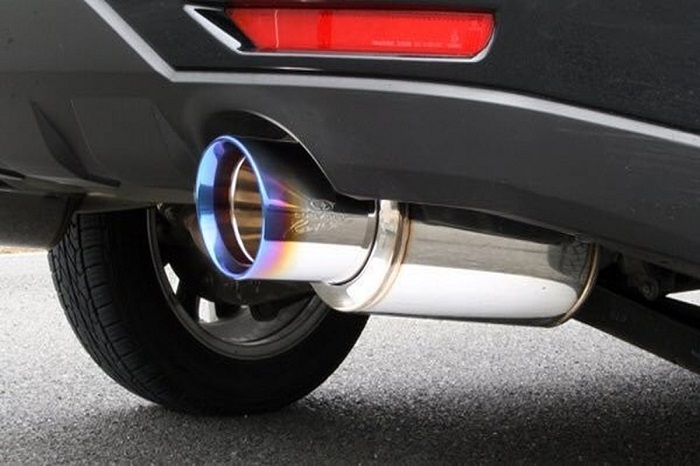A car’s exhaust system plays an important role in the overall performance and efficiency of the vehicle. It is responsible for controlling the emissions and ensuring that they are within the required standards.
The consists of several components, including the exhaust manifold, catalytic converter, muffler, and tailpipe. Understanding the different types of car exhaust systems is essential for proper maintenance and performance of your vehicle.
Exhaust Manifold
Table of Contents
The exhaust manifold is the first section of a car’s exhaust system. It is the point where the engine’s exhaust gases are first collected. The gases then travel through the rest of the system and are eventually expelled from the car.
There are two main types of exhaust manifolds: cast iron and tubular. Cast iron manifolds are made from, you guessed it, cast iron. They are strong and durable, but they are also heavy. Tubular manifolds are made from steel or stainless steel tubing. They are lighter than cast iron manifolds, but they can be more difficult to install.
Which type of manifold is best for your car depends on a number of factors, including engine type and power output. Talk to your mechanic to see which option is right for you.
Muffler
The muffler is one of the most important parts of the car exhaust system. Its job is to reduce the noise produced by the engine, making it more bearable for drivers and passengers. There are different types of car exhaust mufflers available on the market.
The first type of muffler is the resonator. This muffler uses a series of chambers and baffles to reflect sound waves back and forth until they cancel each other out. Resonators are typically very effective at reducing noise, but they can also add significant weight to the vehicle.
The second type of muffler is the absorption muffler. This design uses materials like fiberglass or ceramic to absorb sound waves as they travel through the muffler. Absorption mufflers are usually much lighter than resonators, but they may not be as effective at noise reduction.
The third type of muffler is the deflection muffler. This design diverts exhaust gases away from sensitive areas like the cabin of the car using a series of pipes and deflectors. Deflection mufflers are typically very lightweight and effective at reducing noise, but they can impede airflow and reduce power output.
Catalytic Converter
A catalytic converter is a device that helps to convert harmful pollutants in exhaust gas from an internal combustion engine into less harmful substances. There are different types of catalytic converters, each designed to work with a specific type of engine. The most common type of catalytic converter is the three-way converter, which is designed to work with gasoline engines. Three-way converters use a catalyst to convert carbon monoxide and hydrocarbons into carbon dioxide and water vapor.
Catalytic converters are an important part of a car’s exhaust system, as they help to reduce emissions and improve fuel economy. In order to work properly, catalytic converters need to be maintained and replaced when necessary.
Tailpipe
Tailpipe emissions are the gaseous exhaust fumes that exit a vehicle through its tailpipe. The main pollutants found in tailpipe emissions are carbon monoxide (CO), nitrogen oxides (NOx), and hydrocarbons (HC).
Reducing tailpipe emissions is important for both public health and the environment. In the United States, the Environmental Protection Agency (EPA) regulates vehicle emissions, setting standards that must be met by manufacturers. The EPA also offers incentives for vehicles that produce low levels of emissions.
Exhaust Gas Recirculation (EGR) System
The Exhaust Gas Recirculation (EGR) system is one of the most important emission control devices on a vehicle. The EGR system recirculates a portion of the exhaust gases back into the engine cylinders. This reduces the amount of NOx emissions released into the atmosphere.
The EGR system consists of an EGR valve, EGR cooler, and various sensors and tubing. The EGR valve is controlled by the engine computer and allows exhaust gases to flow into the intake manifold at specific times. The EGR cooler helps to lower the temperature of the exhaust gases before they are recirculated back into the engine cylinders. Various sensors are used to monitor the operation of the EGR system and ensure that it is functioning properly.
If you have any questions about your vehicle’s exhaust system or emissions control devices, be sure to ask your mechanic or dealership service department for more information.
Oxygen Sensor
An oxygen sensor is a device that measures the concentration of oxygen in the exhaust gas of an internal combustion engine. It is used as a feedback device to control the air-fuel ratio in order to minimize emissions and improve fuel economy. Oxygen sensors are also known as lambda sensors.
Conclusion
Understanding the different types of car exhaust systems is essential for proper maintenance and performance of your vehicle. The exhaust system consists of several components, including the exhaust manifold, catalytic converter, muffler, and tailpipe. Each of these components plays an important role in controlling the emissions and ensuring that they are within the required standards. It is important to inspect and replace these components regularly to maintain optimal performance and fuel efficiency.







